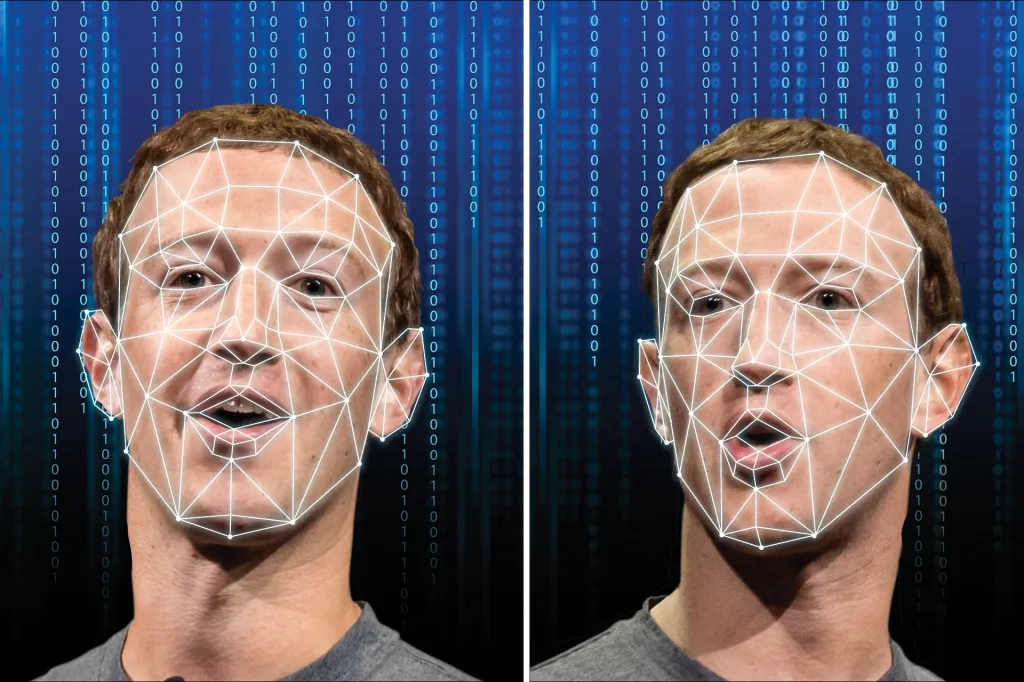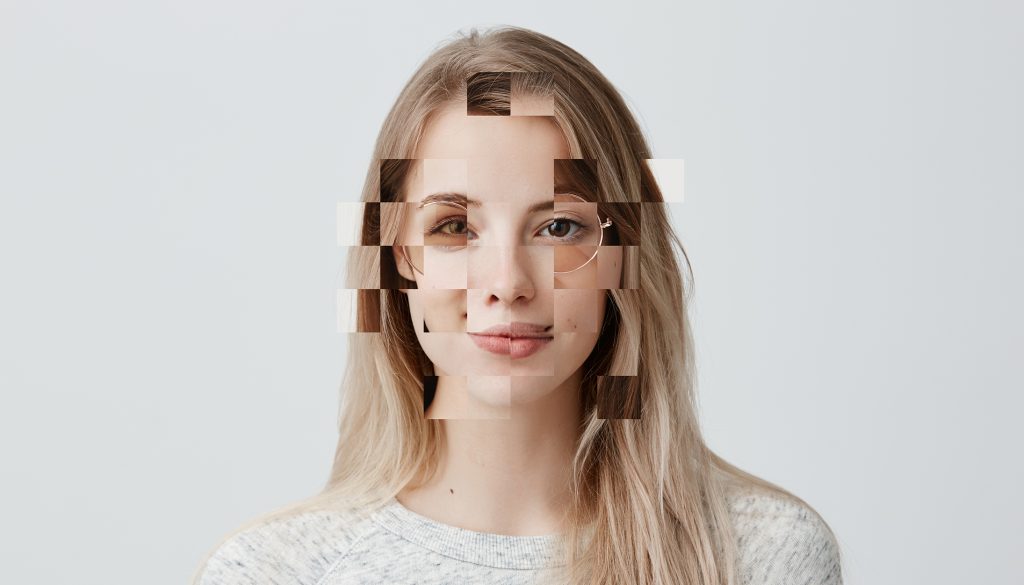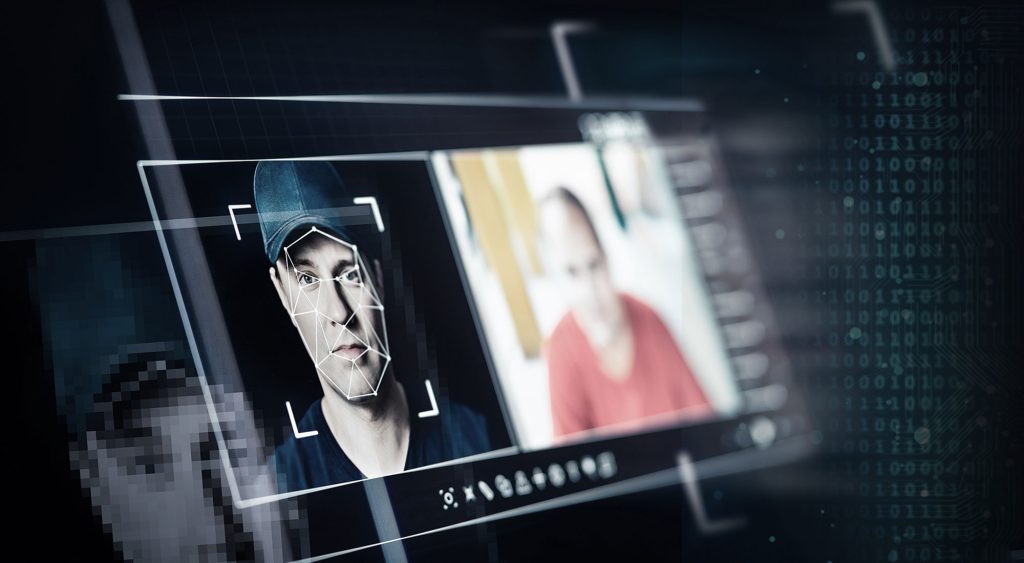What Is Deepfake Technology? A Comprehensive Guide for 2025
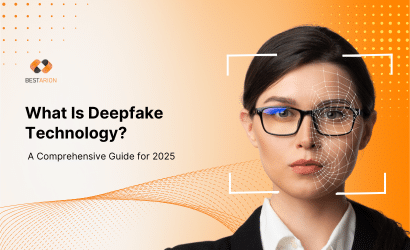
Deepfake technology, a term derived from “deep learning” and “fake,” refers to synthetic media—images, videos, or audio—generated using artificial intelligence (AI) to mimic real people. While it offers innovative applications in entertainment, education, and accessibility, it also poses significant challenges related to misinformation, privacy violations, and fraud. This article delves into the intricacies of deepfake technology, exploring its mechanisms, applications, risks, and the evolving legal landscape.
What is Deepfake Technology?
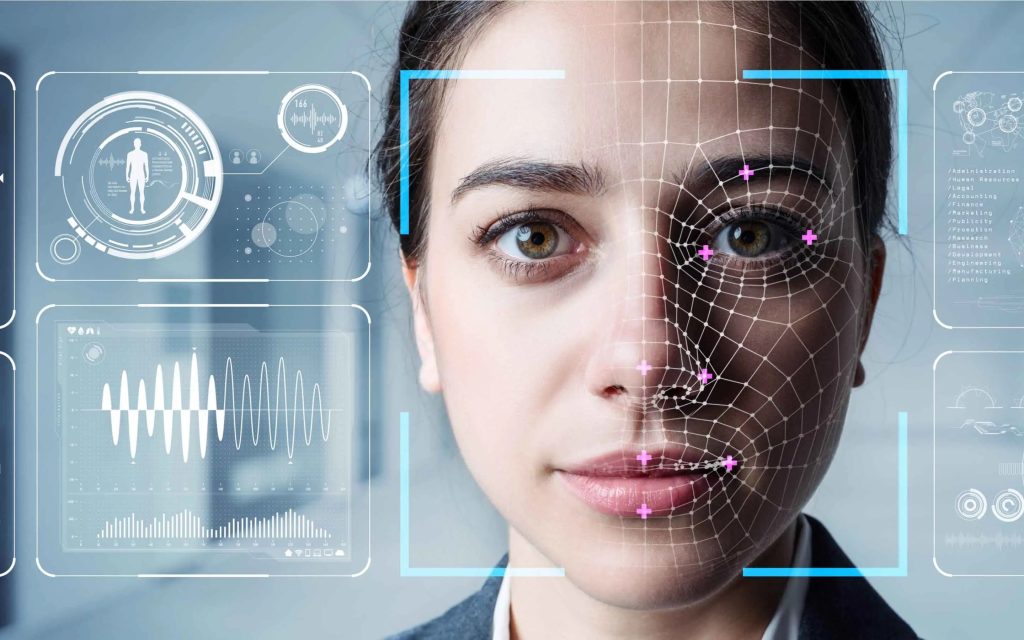
Deepfake technology refers to the use of artificial intelligence (AI) and machine learning algorithms to create hyper-realistic fake media, primarily videos, images, and audio, by manipulating or synthesizing visual and auditory content. The term “deepfake” is derived from a combination of “deep learning,” a type of machine learning that involves neural networks, and “fake,” referring to the synthetic nature of the media produced.
How Do Deepfakes Work?
Deepfakes are not simply edited or photoshopped images and videos. Instead, they are generated using advanced machine learning techniques that combine real and synthetic content. These tools analyze facial features, voice patterns, and movements to create highly realistic fake videos or images.
At the core of deepfake creation is a system called a Generative Adversarial Network (GAN), which consists of two algorithms:
-
The generator, which creates fake content based on real data.
-
The discriminator, which evaluates how convincing the fake is compared to real examples.
The generator keeps improving its results based on feedback from the discriminator. Over time, this back-and-forth helps the system produce more realistic and convincing deepfakes.
To create a deepfake, a GAN first studies photos or videos of a person from various angles to understand their facial structure, movements, and expressions. For videos, it also analyzes speech and behavioral patterns. The generator then creates fake content, and the discriminator refines it until the final output closely resembles real footage.
There are two main methods of creating deepfake videos:
-
Source video manipulation – alters an existing video to make someone appear to say or do something they never did.
-
Face swapping – replaces one person’s face in a video with another person’s face.
Some specific deepfake techniques include:
-
Source video deepfakes: A neural network called an autoencoder studies the original video, capturing the target person’s expressions and body language. It then applies those features to the edited content using an encoder-decoder system.
-
Audio deepfakes: A GAN is trained on a person’s voice and speech patterns to clone how they sound. This synthetic voice can then be used to say anything the creator wants. This technique is often used in video games.
-
Lip syncing: A voice recording is matched to a video, making it appear that the person in the video is speaking those words. When combined with audio deepfakes, it creates an even more convincing illusion. This method is supported by recurrent neural networks.
Technology Required to Develop Deepfakes
Creating realistic deepfakes requires a combination of advanced hardware, specialized software, and machine learning techniques. Below are the core technologies used in deepfake development:
1. Machine Learning (ML) and Deep Learning
At the heart of deepfake technology is deep learning, a subset of machine learning. These systems analyze massive datasets of human faces, voices, and movements to learn how to recreate or manipulate them. The more data these systems process, the more accurate and realistic the output becomes.
Key algorithms used:
-
Generative Adversarial Networks (GANs) – for generating realistic images or video frames.
-
Autoencoders – for encoding and decoding facial features.
-
Recurrent Neural Networks (RNNs) – for modeling sequential data like speech and lip movements.
-
Convolutional Neural Networks (CNNs) – for analyzing and manipulating images frame by frame.
2. Generative Adversarial Networks (GANs)
A GAN consists of two neural networks:
-
Generator: Creates synthetic media based on training data.
-
Discriminator: Evaluates how close the generated media is to real examples.
GANs continuously refine the output through a process of competition, resulting in increasingly convincing deepfakes.
3. Autoencoders and Variational Autoencoders (VAEs)
Autoencoders compress and reconstruct data. In deepfake development:
-
An encoder captures important features of a person’s face.
-
A decoder maps those features onto a new face or video.
VAEs add more control and flexibility by incorporating statistical variation, useful for smooth face swaps and animated transitions.
4. Facial Recognition and Landmark Detection
Deepfake systems rely on facial landmark detection to track and map features like eyes, nose, mouth, and jawline. These landmarks guide the system to accurately superimpose or alter a face in real time.
Popular libraries used:
-
dlib
-
OpenCV
-
FaceNet
-
MediaPipe
5. Voice Synthesis and Speech Cloning
For audio deepfakes, speech synthesis models are trained to mimic tone, pitch, rhythm, and speaking style.
Common technologies include:
-
Text-to-Speech (TTS) engines like Google Tacotron, Descript’s Overdub, or Microsoft VALL-E.
-
Voice cloning using models like Lyrebird or Respeecher.
6. High-Performance Hardware
Deepfake training is computationally intensive and often requires:
-
Powerful GPUs (e.g., NVIDIA RTX series) for real-time image processing.
-
Large memory (RAM) and fast storage (SSDs) to manage and process large datasets.
-
Cloud-based GPU platforms like Google Colab Pro, AWS EC2, or Microsoft Azure for scalable model training.
7. Deepfake Development Tools & Platforms
Several open-source tools and commercial platforms make deepfake creation more accessible:
-
DeepFaceLab: A powerful tool for face swapping and manipulation.
-
Faceswap: Open-source software using TensorFlow and Keras.
-
Avatarify: Real-time deepfake tool for live video feeds.
-
Zao, Reface, Wombo: Mobile apps using pre-trained models for consumer-level deepfakes.
8. Data Collection and Preprocessing Tools
Before training a deepfake model, a large dataset of high-resolution facial images or videos is required. Tools are used to:
-
Extract frames from video.
-
Align and crop faces.
-
Normalize lighting and angles.
Scripts and software for these steps are often bundled with deepfake tools like DeepFaceLab or Faceswap.
9. Video Editing Software
After generating the deepfake, video editing tools help refine the final product by:
-
Adjusting color and lighting to match the original footage.
-
Cleaning up glitches or artifacts.
-
Adding audio overlays or subtitles.
Common tools include:
-
Adobe After Effects
-
Final Cut Pro
-
DaVinci Resolve
Summary Table: Technologies Used in Deepfake Creation
| Technology | Purpose |
|---|---|
| Deep Learning (GANs, CNNs) | Generate realistic visuals and mimic human features |
| Autoencoders/VAEs | Encode and reconstruct facial features |
| Facial Recognition | Detect and map key facial landmarks |
| Voice Synthesis (TTS, cloning) | Clone voice and speech patterns |
| High-performance GPUs | Enable fast and accurate model training |
| Open-source deepfake tools | Build, train, and test deepfake models |
| Video Editing Software | Final polish and integration of deepfake output |
Applications of Deepfake Technology
Deepfake technology has rapidly evolved and found applications across various industries—from entertainment and marketing to cybercrime and politics. While some uses are creative and innovative, others raise serious ethical and legal concerns. Below are the most common ways deepfakes are used today:
Positive Uses
1. Entertainment and Media Production
Deepfakes are frequently used in film, television, and video games to create hyper-realistic effects.
Examples:
-
De-aging actors or recreating deceased ones in films.
-
Replacing stunt doubles’ faces with actors for seamless action sequences.
-
Realistic dubbing for international film distribution (matching lip movements to translated audio).
-
Animated characters with lifelike facial expressions.
These applications save time and budget while enhancing creative possibilities.
2. Social Media and Viral Content
On platforms like TikTok, Instagram, and YouTube, deepfakes are often used to create humorous, shocking, or entertaining content.
Examples:
-
Face-swapping celebrities into funny scenarios.
-
Users placing their own faces into iconic movie scenes.
-
Generating viral memes using fake voices or manipulated videos.
Many of these uses are lighthearted, though they sometimes blur the line between parody and misinformation.
3. Marketing and Advertising
Brands are exploring deepfake technology to deliver more personalized and engaging content.
Examples:
-
Hyper-personalized video ads where celebrities “speak” directly to the viewer.
-
Multilingual video campaigns where the same actor appears to fluently speak various languages.
-
Recreating historic figures for immersive brand storytelling.
This technology allows marketers to create dynamic campaigns with a global reach.
4. Education and Training
Deepfakes are being used in academic and corporate training programs for immersive learning experiences.
Examples:
-
Historical reenactments with lifelike portrayals of famous figures.
-
Realistic role-playing simulations for soft-skills training.
-
Virtual tutors or presenters delivering course material in different languages or voices.
These applications make education more interactive and engaging.
5. Accessibility and Assistive Technology
For individuals with disabilities, deepfakes can help generate visual or audio content that enhances communication.
Examples:
-
AI-generated avatars for those with speech impairments.
-
Visual aids that translate sign language into spoken words or text.
-
Voice cloning for people who have lost their ability to speak.
Such innovations aim to improve inclusivity and quality of life.
6. Art and Creative Expression
Some artists are embracing deepfake tools as a new medium of digital expression.
Examples:
-
Creating surreal, animated portraits using GANs.
-
Designing AI-generated performances or music videos.
-
Exploring philosophical themes like identity, perception, and reality.
Malicious Uses
7. Cybercrime and Fraud
Unfortunately, deepfakes are also being exploited for malicious purposes.
Examples:
-
Impersonation scams: Fraudsters use deepfake audio or video to impersonate CEOs or executives and authorize fake transactions.
-
Phishing and social engineering: Attackers mimic trusted voices or faces to gain sensitive information.
-
Blackmail and extortion: Individuals are targeted with fake compromising videos.
These criminal uses have prompted serious discussions about detection and regulation.
8. Political Manipulation and Misinformation
Deepfakes pose a significant threat to democracy and public trust when used to spread false information.
Examples:
-
Fabricated videos of politicians making offensive or false statements.
-
Misleading footage timed around elections or social movements.
-
Propaganda created to incite division or unrest.
Even when identified as fake, such content can spread rapidly and cause real-world damage before it’s debunked.
9. Pornography and Non-Consensual Content
One of the most disturbing uses of deepfake technology is in the creation of fake adult content.
Examples:
-
Face-swapping celebrities or private individuals into pornographic videos without consent.
-
Distributing revenge porn using synthetic media.
-
Targeting women disproportionately with deepfake abuse.
This has led to increasing calls for stronger legal frameworks to combat deepfake pornography
While niche, this use demonstrates the creative potential of deepfake technology when used ethically.
Are Deepfakes Legal?
For the most part, deepfakes are legal, unless they violate specific existing laws such as those related to child exploitation, defamation, or hate speech. This legal gray area means law enforcement often has limited power to act—even when deepfakes cause serious harm.
However, momentum is growing among lawmakers to regulate deepfake technology more directly.
Current Legal Status in the U.S.
-
As of now, over 40 U.S. states are working on legislation to regulate deepfakes.
-
According to Bloomberg Law, five states have already banned the use of deepfakes for election interference, and seven more are considering similar laws in 2024.
-
At least 10 states have passed laws making non-consensual deepfake pornography illegal.
The lack of broader regulation is largely due to limited public awareness about deepfakes and their potential for harm. As a result, many victims don’t have clear legal protections when targeted by malicious synthetic media.
Proposed U.S. Legislation Targeting Deepfakes
Several new bills are aiming to directly address the misuse of deepfake technology. Here are some of the most notable:
1. DEFIANCE Act
-
Full name: Disrupt Explicit Forged Images and Non-Consensual Edits Act.
-
Purpose: Would become the first federal law allowing victims to sue creators of explicit deepfakes.
-
Key point: Applies when creators knew or recklessly ignored the fact that the victim did not consent.
2. Preventing Deepfakes of Intimate Images Act
-
Introduced: May 2023 by Congressman Joe Morelle.
-
Goal: Criminalize the non-consensual sharing of deepfake intimate images.
-
Focus: Protects individuals from the creation and distribution of manipulated sexual content without consent.
3. Take It Down Act
-
Sponsor: Senator Ted Cruz.
-
Scope: Would make it illegal to publish or threaten to publish deepfake revenge porn.
-
Additional measure: Requires social media platforms to remove such content within 48 hours upon a valid request from the victim.
4. Deepfakes Accountability Act
-
Introduced: September 2023 by Congresswoman Yvette Clarke and Congressman Glenn Ivey.
-
Requirement: All deepfakes must include a digital watermark for traceability.
-
Criminalizes: Malicious deepfakes involving sexual content, criminal behavior, violence incitement, or foreign election interference.
How Are Deepfakes Dangerous?
Despite their largely legal status, deepfakes pose serious risks in multiple areas:
- Fake videos or images can be used to blackmail individuals, destroy reputations, or coerce victims into harmful situations—often with little legal recourse.
- Deepfakes are a potent tool for spreading false political narratives, especially when used by state-sponsored actors to sway public opinion or undermine trust in institutions.
- Manipulated videos of political candidates can be used to influence voter perception, spread lies, or discredit opponents during campaigns.
- Fake news or videos about company executives or products can be used to manipulate stock prices and mislead investors for financial gain.
- Deepfakes can mimic a person’s voice or face to gain unauthorized access to bank accounts, business transactions, or personal data.
- Deepfake technology has been widely abused to create non-consensual adult content, disproportionately targeting women and causing severe emotional and social harm.
- As deepfakes become more realistic, people may begin to doubt authentic videos, leading to an intellectual crisis where even genuine evidence is dismissed as fake.
- Deepfakes can potentially bypass biometric security systems, such as facial recognition, posing a threat to both personal and national security.
How to Detect Deepfakes?
1. Visual Artifacts and Inconsistencies
Even the most realistic deepfakes often have subtle visual flaws, such as:
-
Unnatural blinking or facial movements
-
Inconsistent lighting or shadows
-
Asymmetrical facial features
-
Distorted backgrounds or warped objects
These inconsistencies can be spotted manually or with image forensics software.
2. Deep Learning and AI-Based Detectors
Advanced machine learning models can be trained to detect deepfakes by identifying patterns invisible to the human eye. Some popular models include:
-
XceptionNet
-
FaceForensics++
-
FakeCatcher (by Intel) – detects blood flow patterns in the face to verify authenticity
-
DeepFaceLab and Deepware Scanner – tools used for analyzing suspected deepfakes
3. Frequency and Compression Analysis
Deepfakes often leave subtle clues in image and video frequency domains:
-
JPEG or video compression artifacts may reveal manipulation.
-
Frequency-based analysis looks at the pixel-level differences and inconsistencies in textures.
4. Eye and Lip Movement Tracking
Natural human behavior—like blinking frequency, eye gaze, and lip-sync accuracy—is hard to replicate consistently. Tools track:
-
Irregular blinking
-
Out-of-sync lip movement with audio
-
Unnatural gaze direction
5. Audio-Video Mismatch
In deepfake videos with synthetic or swapped audio:
-
Mismatch between the voice tone and facial expressions
-
Lack of natural breathing sounds or mouth acoustics
-
Tools like ASVspoof help detect spoofed audio used in deepfakes.
6. Digital Watermark and Metadata Analysis
Analyzing metadata (like camera info, timestamp) or searching for invisible watermarks embedded in authentic videos can expose fakes. In contrast, deepfakes usually have stripped or altered metadata.
7. Blockchain and Content Authentication Tools
New technologies are being developed to verify media authenticity:
-
Content Authenticity Initiative (CAI) by Adobe
-
Microsoft’s Project Origin
-
Blockchain-based timestamping for video authenticity
8. Crowd-Sourced and Manual Verification
When automated tools are inconclusive, fact-checkers, journalists, and open-source intelligence (OSINT) communities use manual review, cross-reference sources, and validate authenticity through known footage.
How to Defend Against Deepfakes
Companies, organizations, and government agencies—such as the U.S. Department of Defense’s Defense Advanced Research Projects Agency—are working on technologies to detect and block deepfakes. Some social media platforms use blockchain technology to verify the source of images and videos before allowing them to be uploaded, ensuring content comes from trusted sources and preventing the spread of fakes. For example, Meta and X (formerly Twitter) have banned harmful deepfakes on their platforms.
Several companies provide deepfake detection and protection software, including:
-
Adobe: Offers a system that allows creators to attach a digital signature to images and videos, providing details about their creation.
-
Intel FakeCatcher: Focuses on speed and accuracy by analyzing subtle physiological indicators, such as pixel changes in blood flow, for real-time deepfake detection.
-
Microsoft: Provides AI-driven software that analyzes videos and photos, giving a confidence score to indicate whether the content has been manipulated.
-
Operation Minerva: Uses a database of known deepfakes to compare and identify if a new video is a modified version of an existing fake, assigned a unique digital fingerprint.
-
Sensity AI: A platform that applies deep learning to detect signs of synthetic media, much like how antivirus tools identify malware. Users are notified when they view a deepfake.
-
Sentinel: A cloud-based service offering real-time deepfake detection through technologies like facial landmark analysis, temporal consistency checks, and flicker detection.
Famous Deepfake Incidents That Shook the Internet
1. Celebrity Deepfakes: One of the earliest widespread uses of deepfakes involved creating fake adult content featuring the faces of celebrities like Emma Watson and Gal Gadot. These deepfakes led to a significant outcry and the rise of efforts to combat non-consensual deepfake pornography.
2. Political Deepfakes: In 2018, a deepfake video of Barack Obama surfaced online, created by researchers at the University of Washington and using AI technology. The video showed the former president saying things he never said, raising concerns about the potential for deepfakes to influence public opinion and elections.
3. Nancy Pelosi Deepfake: In 2019, a video of Nancy Pelosi, the Speaker of the U.S. House of Representatives, was altered to make her appear intoxicated. The video spread on social media and became a prime example of how deepfakes could be used for political manipulation and misinformation.
4. Tom Cruise Deepfake: A TikTok account created by an individual using deepfake technology featured hyper-realistic videos of Tom Cruise performing various activities. These videos gained popularity due to their high quality, showcasing how deepfakes can be used for entertainment and viral content creation.
5. Deepfake of Mark Zuckerberg: In 2019, a deepfake of Mark Zuckerberg, CEO of Facebook, was created as part of an art installation. The video showed Zuckerberg claiming control over the personal data of Facebook users. The video was designed to raise awareness about privacy concerns and the potential for deepfakes to be used for manipulation.
6. “The Presidents” Deepfake Series: A YouTube channel known as “The Presidents” used deepfake technology to create humorous videos featuring historical figures like Abraham Lincoln and George Washington in modern scenarios, often interacting with each other or making satirical statements. Though this is more light-hearted, it demonstrates how deepfakes can be used in entertainment.
7. Deepfake in the 2020 U.S. Elections: During the 2020 U.S. presidential election, deepfakes were used in several disinformation campaigns to create misleading content about political candidates. This highlighted the growing concerns over the use of deepfake technology to undermine democracy.
8. The Deepfake of Rihanna: In 2021, a deepfake video featuring Rihanna was created and posted online, in which her image was manipulated to endorse a fraudulent cryptocurrency. This is an example of how deepfakes can be used in scams to exploit the likeness of public figures.
Conclusion
Deepfake technology is a powerful tool that, when used responsibly, has the potential to revolutionize industries like entertainment, education, and virtual experiences. However, its ability to create highly convincing but fraudulent content also raises significant ethical, legal, and social concerns. As deepfakes become more widespread, it is crucial to continue developing solutions for detection, regulation, and protection against misuse, ensuring that the technology is used responsibly and ethically.


